 Friday already..!
Friday already..!
Is it me or do the weeks just seem to fly by at the moment, I’m constantly reminded by my elders that as the years tick by you notice time seems to move a great deal faster however you seem to move a great deal slower, I’m hoping it’s just the cold weather.
Maybe this is another reason why some people just want to get to the nitty gritty of form reading and really just apply a few methods to enable them to quickly differentiate between possible selection.
I do think that sometimes over study can play apart in what you are actually trying to achieve as a form reader and the notion of form reading perfection seems unattainable for the average racing enthusiast. My point here is to make sure everyone not only understand what we are trying to do when looking at a horse’s chances within a race, but also that you are able to apply some of the reasons and methods laid out within this blog. By not only encouraging you to introduce some of the methods into your own selection process, but to do so quickly and easily but most importantly, effectively.
“When looking at any horse race we can be certain of one thing and one thing only. One of these horses will win the race”
Now I’m sure a few of you may be saying, “Yes but what about a dead heat?”
Let’s not worry about that as the odds for this happening in the race you are dealing with are somewhat remote, and I’ve only ever been involved in a handful of races when this affected my selection. Even with a dead heat this is certainly better than the horse finishing runner up. Now I’m certain someone will dig out the facts for dead heats for this year and last and I know I’ve read it somewhere already but I can’t remember off the top of my head today.
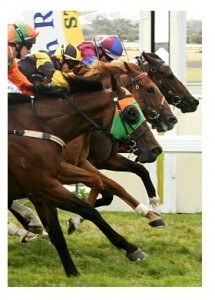 Watching and taking note of how a close race or a weak affair finished can give you a great insight in the structure of the race and the horses performing within it. Especially if you following a particular horse’s progress.
Watching and taking note of how a close race or a weak affair finished can give you a great insight in the structure of the race and the horses performing within it. Especially if you following a particular horse’s progress.
As we all know Handicap races are supposed to finish with all the horses finishing together, at least that what the Handicapper is trying to predict when handing out penalties.
Unfortunately certain aspects of today’s elements, horses form past or present as well as any current fitness issues allow little chance of this actually happening. Usually what happens is that the horses running in Handicap races are just as strung out as in all other types of races.
So how do we start to predict today’s performances, well you should normally start by looking at the figures that today’s horses have ran previously. In general when horses run well they receive good finishing form numbers and when they don’t they receive bad ones. This is taking recent form into account only and we all know by now that there is more to this than first meet the betting eye.
“The ability of each horse cannot solely lie with its last race or last couple of races”
There are many reasons why a horse may not run to its recent form numbers, such as unsuitable distance, wrong type of track, draw biases, pace problems, trouble getting an open run, wrong ground conditions, class, and the list goes on. However what you need to do at this early stage of the selection process is to determine which horses seem capable under reasonable circumstances, of winning the race.
Some races are easier than others to qualify and the reason for this has to be the quality of the race as well as the history of the horses competing.
What to look for;
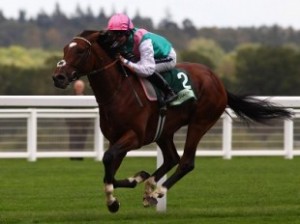 One way to determine the competition is to follow the Official Rating of the top 3 to 4 runners within today’s race. If the top rated horse for example is running of an official rating of 79, and the other three horses have exceeded or been around this number recently and nobody else within the race has beaten a 79 rated horse, it’s not likely someone will pull off a surprise. The simple way to do this is look at all horses last runs (if won) and see what type of competition they ran against in their last race, the Racing Post history will give you all the Official Ratings of horses it ran against previously. At this stage of the process you’re not really evaluating form but simply getting a feel for each horse and its ability.
One way to determine the competition is to follow the Official Rating of the top 3 to 4 runners within today’s race. If the top rated horse for example is running of an official rating of 79, and the other three horses have exceeded or been around this number recently and nobody else within the race has beaten a 79 rated horse, it’s not likely someone will pull off a surprise. The simple way to do this is look at all horses last runs (if won) and see what type of competition they ran against in their last race, the Racing Post history will give you all the Official Ratings of horses it ran against previously. At this stage of the process you’re not really evaluating form but simply getting a feel for each horse and its ability.
Race Class;
“From 30 feet away she looked like a lot of class. From 10 feet away she looked like something made up to be seen from 30 feet away.” Raymond Chandler
The argument for a horses chances of winning when dropping back in Class than when stepping up in Class gives a good indication of what to look for.
There are several reason for this,
1: The Easier Pace Of Lower Class Races.
2: The Quality Of The Opposition, (some of which may be moving up in class to compete).
3: The Fact That A Horse Is Often Dropped In Class After A Dull Effort (and then it produces it’s usually effort in milder competition.
4: The Previous Class Not Suiting The Horse (especially after a long layoff as well as having a fitness issues).
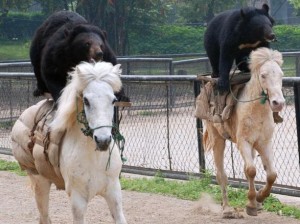 Prize money in Handicap races is the bread and butter for any stable throughout the season, so what affect does this have on Class?
Prize money in Handicap races is the bread and butter for any stable throughout the season, so what affect does this have on Class?
Quality of the field can be determined by the prize money on offer, understanding the Class hierarchy within a particular track will go a long way to point you in the direction of potential selections.
Ask yourself this; is the quality of the competition in a £2500 race for Non Handicaps at Kempton tougher than or not as tough as a £4000 race for Non Handicap types at Southwell, what kind of field is attracted to smaller prize money races? Especially if some of the runners were previously racing for £6500 prize money races a few months ago.
 When horses go up or down in Class they also go in and out of form, as a rule of thumb the higher Class races present the horse with a greater number of potential race rivals. When looking at Class past and present of a potential selection I would suggest you look at how successful the horse has been in the past in relation to today’s Class, rather than noting that the horse has ran in this Class but did nothing.
When horses go up or down in Class they also go in and out of form, as a rule of thumb the higher Class races present the horse with a greater number of potential race rivals. When looking at Class past and present of a potential selection I would suggest you look at how successful the horse has been in the past in relation to today’s Class, rather than noting that the horse has ran in this Class but did nothing.
If a horse has shown in the past that it can compete in this Class then there is a positive that the horse may repeat that run again today. Look for a horse which has at least placed in today’s Class, over similar trip and ground conditions.
Truly Dropping Back in Class;
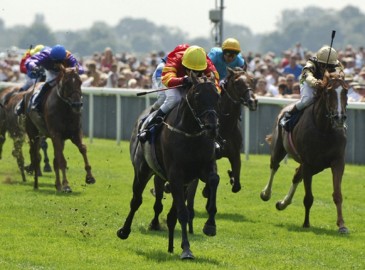 For example, let’s say Horse A wins and places in four races over Class 4 conditions, one win, one second place and two third places. The trainer then decides to step Horse A up to Class 2 competition where the horse finishes 11th.
For example, let’s say Horse A wins and places in four races over Class 4 conditions, one win, one second place and two third places. The trainer then decides to step Horse A up to Class 2 competition where the horse finishes 11th.
The trainer then decides to enter the horse in a Class 3 race to hopefully improve the horse’s chances. The question we now need to ask ourselves is does this mean now that the horse has dropped back in Class? And the answer is this, well no not really.
Let me explain, due to the level of the horse’s success we know his best performances have come at Class 4 where we can expect him to give us a run for our money. His performances at Class 4 are proven; his performances are not proven in Class 2 races where he managed to achieve nothing apart from make up the numbers. He is not even proven at Class 3 where he still might be simply outclassed.
Sometimes it’s difficult to gauge Class levels and the greater numbers of horses you have in the race where the trainer has moved them through this Class shifting process. It’s worth paying attention when the more respected and higher percentage 20% plus strike rate trainers move their horses up or down in Class. Again a big drop in Class usually means a drop in confidence or the desire to offload a particular horse; however a step up can indicate the opposite.
Don’t get this confused with the normal trainer types as this only really applies to the trainers right at the top of their game. By including this point I’m by no means trying to confuse you with the step up or drop back in Class overall.
Point to ponder;
 Having horses that have at least 8 races minimum gives you some history to work with, the more the better. If all the horses in a particular race have a similar level of history then it may be easier to work through the pack.
Having horses that have at least 8 races minimum gives you some history to work with, the more the better. If all the horses in a particular race have a similar level of history then it may be easier to work through the pack.
While recent form is important , any horse which has shown itself to have previous Class form must be taken into account and monitored respectively as there is a chance the horse may very well return to its previous racing ability.
If the horse was competing successfully 8 months ago then missed the next few months for whatever reason, then came back on its first start only to produce nothing like its past form, this could be seen as expected.
It may be that the horse simply needs to attain a certain level of race fitness again to return to its former success despite its disappointing first return run. Remember recent form and past performances need to be taken equally into account and their merits awarded the relevant approval.
Finally;
 I would suggest when doing this type of pre race analysis, if 2 or even 3 horses are standing out above the rest of the field and you cannot really separate one horse from another, my advice is to back them all.
I would suggest when doing this type of pre race analysis, if 2 or even 3 horses are standing out above the rest of the field and you cannot really separate one horse from another, my advice is to back them all.
Now you can play around with the staking here if you wish, but in terms of trying to find the race leaders you should never really have more than 3 outright backing selections in any given race unless the race is a really tight affair in which case it may be wise to avoid such races.
It’s always better to spread or simply Dutch your bets rather than leave one selection out of the fold only to see him win by a nose. Especially if you are getting started with racing, dutching can be an ideal opportunity for some welcomed early success. “You never know you may even find yourself involved with a dead heat”.
Have A Great Weekend,
BSG
p.s, I have no idea where this bear race photo was taken and which sick bastard thought this was a good idea, you certainly wouldn’t think the Queen would be interested in sitting though the full Race Card. Who knows what the hell is going through the bears mind, ” If I win this next time it’s Ascot”. Answers in a comment please 🙂



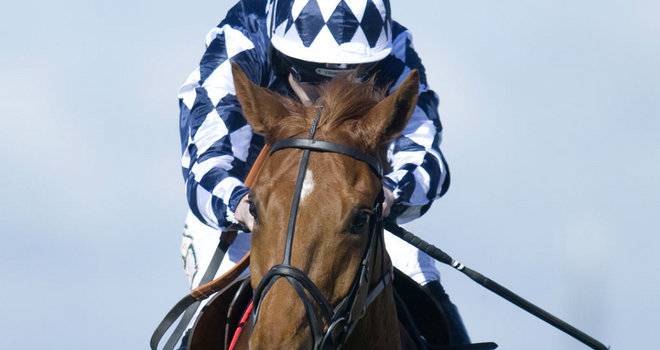

Great work keep it coming, best blog on earth
Love your site man keep up the good work
Wow this is a great resource.. I’m enjoying it.. good article
hi…your blog is still difficult to read….white type on a black background does not work….hope your techie man can sort this out…cheers james
I am very excited to see how the Horse Racing Software will perform. Very interesting Blog and keep up the good work.
Thanks for the comments, I will keep you all updated next week.
Hi please put me onyour priotry list,regards john
Hi John, as I mentioned in the email, if you are on my list then you will know about it next week, I hope you enjoyed the blog post this week .. Thanks BSG
good read up m8 you right ther
Thanks stephen, glad you enjoyed it